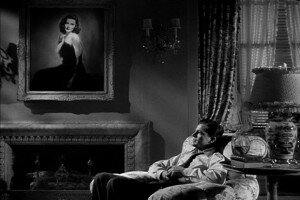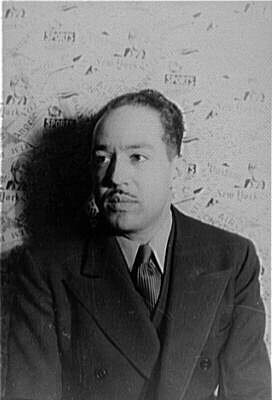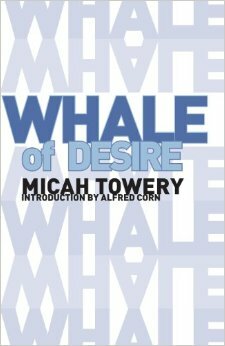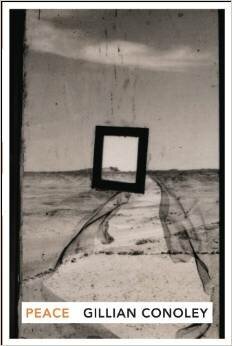FILM NOIR: SLOW FADE TO BLACK
by L. E. Ward
Certain genres of film seem to yield more and more, as the decades go by, of their richness, denseness and complexity. One of these is, certainly, the belatedly titled (by French critics of the 1950s) black film, or film-noir. The reputations of literateurs in our history (including Poe and Washington Irving), have often begun in Europe, not to mention that entire post-WWI generation of expatriates — who had been predated by Henry James and Gertrude Stein, among others, in the late nineteen, and early twentieth centuries.
At times, American excellence is too close-up; too visible to be “seen”; or viewed with a vision of the happenstance; the taken-for-granted. The Scriptures said it originally: “A prophet is not without honor, except in his own country.”
I first saw films-noir as a matinee-going child of the 1950s. At that time, I was not aware of them by a name, or even, necessarily, as a genre, except as depictions of crime and corruption, usually in a tense, urban setting. Films which stood out for me — with no recommendation or reference other than my own personal, boyhood viewing — in that era, were Finger Man (1955; Harold Schuster) and The Prowler (1951; Joseph Losey) — these, in particular, and for their particulars. Titles which emerged were The Phenix City Story, various city “confidentials” and “exposes”; even imported, low-budget British films, like The Square Ring (1953; U.S. release, 1955). Frank Lovejoy and Richard Conte were typical protagonists. Espionage or theft under a low sky emerged in Shack Out on 101 (1955) and Highway Dragnet (1954) — films remembered, by me, today, only in terms of an impression of atmosphere.
As I recall, after a third of a century, The Prowler had to do with a policeman (Van Heflin) enticed by a housewife who claimed she was disturbed by a “prowler”, and who lured him into a scheme to kill her husband. The climactic car chase on a dusty road is the only image retained by me. Finger Man yielded more: the terseness, tenseness, of Frank Lovejoy as a criminal, gone undercover after a booze-ring, with the heroine (Peggy Castle), walking alone on a dim-lit, city street, to her death at the hands of a scarred villain. When Lovejoy later apprehends the fiend, he says: “I know why you killed her, but did you have to do that to her face?” decades before I ever heard of existentialism, this remains my vivid, non verbalized introduction to the “night-world.”
The 1940s films-noir were seen by me, almost in toto, when they came to television, in the late 1950s, and early 1960s, when various studios sold their backlogs to television. One had heard of some of the more famous; but one got to see, and learn to appreciate, to immerse oneself, in the ambiance; the period atmosphere, again, independently.
Most of the films not only were in black-and-white but they used shadows for emphasis; for, indeed, a kind of poetry. If anything is disturbing about these colorizing fiends, it is all that they have missed, and has been missing, in recent decades. Present color has accompanied an abandonment of the old shrewdness in mannerism, art direction, and set decor.
The German Expressionist backgrounds, as well as the flight from the Nazis, of many of the writers, directors — and even some actors of “black” film, are undeniable; or, at the very least, suggestive. Some critics have squabbled about how something — a genre –could really exist, if its makers had not so labeled it and declared themselves, and their intentions.
The strongest, clearest, adequate evidence is the films, themselves and their abundance, in both quality and quantity. What B-film or television episode about crime or detectives, or not, can compare to the work of the 1940s (and somewhat of the 1950s)? Miami Vice has had effects, visceralness, “colors”; so has Crime Story. To me, neither is matchable.
This is definitely to be said for the 1940s movie-makers: they created a corrupt, aristocratic, materialistic world — making it compelling, and not glossy. It was a world imbued with a knowledge of lofty ideals, but a realization of the way men really “live,” and the beast that dwells underneath the skin. Some revisionists have carped that Hollywood did not know, or “allow,” the atrocities of the fascists, either to be seen explicitly or precisely, in the wartime era, or even its aftermath. While one can counter this, somewhat, with examples like Saboteur (1942), The Stranger (1946), and a few others, this is not, terribly, the point.
The vision of blackness is timeless, is eternal, is instinctive, as well as subjective. Of course, it involves a visual, as well as aesthetic ambiance; we are-entertained, entranced, by inequity and iniquity. Still, one was never puzzled, or less than certain, of what inhumanity or corruption was. The city — impersonal, dangerous, uncertain, and unreliable — contrasted with rural and small-town bourgeois values. The seduction of the cosmopolitan -that glitter that was gold, and not “golden” — was a conundrum. I recall the moral center of Veronica Lake’s impassivity, which was, really, not passive, either in the main or in its results. Most of the detectives were loners, independents; they were a part of, yet apart from, the often-corrupt, and always tractable, “police.” They knew the score; worked for hire, for a living, were rarely conned, although they could be; and were resolute to the photo-finish.
Before the 1940s, the “detectives” were urban gentlemen (whether Philo Vance, Nick Charles, or Sherlock Holmes — or Charlie Chan), who approached crime as a hobby, as well as an intellectual incentive. By the advent of John Huston’s The Maltese Falcon (1941), nothing would be so elitist or flippant, again. For all the tartness of 1940s detectives’ tongues, and their maintenance of an attitude of cool, of tight-lipped composure, they were like aerialists on a tightrope of experience, with only the abyss, or the knowledge of the abyss, beneath.
The genre progressed, and changed, slowly but surely. Alfred Hitchcock was one of its greatest originators, as well as stylists, but so were Fritz Lang, Orson Welles and Robert Siodmak. Some producers focused upon unusual intelligence and even artistry in handling of mediocre material, significantly, Val Lewton. Billy Wilder, Henry Hathaway, Otto Preminger and many others brought additional nuances.
By the 1940s, private detective films became a surfeit; although their guises were, truly, various and subtle. Consider Edward G. Robinson as the insurance investigator, Keyes, in Double Indemnity (1944), as well as the committed Nazi-hunter in Welles’ The Stranger (1946), as indications of just how precise, yet variable, depictions of the moral adversaries of the “immoral,” could be.
Some historians have seen the femme-fatale as a causal factor of blackness to descend upon humanity; others have been attuned to the aestheticism of elitists, themselves (the old saw of art versus reality; education versus feeling). Double Indemnity, among others (Ivy, The Locket, etc.), can be cited in the former instance; many others (Laura, The Unsuspected, The Madonna’s Secret), among the latter.
Film-noir, probably, does have parameters, but they are not as easy or as facile as this. Above all, dark film is serious; it is like a cat enticing a mouse into its trap. What would not succeed as a sermon, captivates as a come-on.
Take the “world” of Waldo Lydecker (Clifton Webb) in Laura: Can anything have been more visually “lovely?” Consider the elegance of urban “great houses” and country-retreats moved through in Saboteur, The Fallen Sparrow, The Unsuspected. Consider the elegant eroticism of “loveless lovers” in Gilda, Mildred Pierce, and Double Indemnity; and consider the wide (if unrecognized) strain of a sexual nonconformity — too easily dismissed as misogyny. Book after book on film-noir comes from the presses, but I still see no reference to Van Heflin as a platonic gay companion of Robert Taylor in Johnny Eager (1942); more to the point, what did the hatred of conventionality mean for the audience and the actors, in Laura, The Uninvited and Rebecca (with strong suggestions of lesbianism); and the woman-killing “Uncle Charley” (Joseph Cotton) in Hitchcock’s Shadow of a Doubt (1943).
Sometimes, the fascists were established as explicit enemies: cold, wealthy, impervious to human feeling, and life, itself–whether as Conrad Veidt in Casablanca (1943) or Claude Rains in Notorious (1946). The sex may have been “bad,” and “good,” but only rarely was it given a suggestion of goodness, as in the case of the psychiatrist (Ingrid Bergman) who saves Gregory Peck in Spellbound (1945). Even in Road House (1948), the good man -Cornel Wilde — saves the good woman (Ida Lupino); but twisted sex, in the form of the evil jealousy of Wilde’s partner (Richard Widmark), put both their lives and limbs at risk, until the conclusion. The political seriousness of film-noir in the 1940s with prewar, wartime, and postwar corruption and criminality all being called, at various times, and in various guises, to account, as well as to attention — can be emphasized by a kind of negative proof. When the true brutalities of war, and its immediate, postwar aftermath, ended (or at least ebbed), the budgets (at the very least), and critical and commercial importance of films-noir, did not cease, but they, frankly, subsided.
They did not, of course, disappear, even into the present. From time to time (the mid and later 1960s — upon occasion, during the 1970s and the 1980s) they, like Satan, have recurred when we have had need of them. The old ambiance of wealth, Eros, and danger recur in Chinatown (1973) — with its suggestion that Mrs. Mulwray cannot go to the police (“He owns them, too”). One cannot even trust oneself, as William Hurt discovers in Body Heat (1981) — where his salvation and nemesis, in the form of Kathleen Turner turns out to be one and the same person.
Evil, corruptibility, malleability have all remained constants. What was unique was what, in a burst of pique, yet fascination, numerous 1940s filmmakers made of them. They looked at the monsters close-up: of big people, who were low-living; and of small, or little, people, who could be corrupted. One rarely, if ever, laughed — or even cried — while watching film-noir. Laughter and tears are, after all, feelings; emotion; sentiment. Film-noir — for all its gaudy apparel — is a black world, a dead universe; where feeling has ended. One may tear a little, in remembering the films and film-viewing experiences, of eras past; At Tangerine being played in the background, at the end, of Double Indemnity, or at Clifton Webb reciting Dowson’s “They are not long the days of wine and roses, love and desire and hate,” near the end of Laura.
One remembers bits and pieces — dialogue; interior decoration; other oddities — from more of such films, than anything except the most beautiful and buoyant of musicals — which are, of course, their antithesis — even to the Technicolor the musicals were almost always originally photographed in: Bette Davis, falling dead on the railroad tracks, to the strains of Chicago, in Beyond the Forest (1949); Gene Tierney, wearing dark glasses, sitting as “Danny” (Darryl Hickman) drowns in Leave Her to Heaven (1945) — a fine film which the rare, original Technicolor, destroys, dramatically and thematically. Marilyn Monroe as the tawdry, yet understandable, Rose — writhing up the final steps of the bell tower in Niagara (1953) — one of the few films-noir made in Technicolor, where the color was not only an “asset,” but not a liability. “They can’t play for you anymore, Rose,” Joseph Cotton says about the bells to the lifeless body of Marilyn Monroe he has just suffocated.
But they “play” for us endlessly, on film, and in such films. For politics, Eros, color, or black-and-white, changing pretensions and fashions, aside, film-noir returns us to the original, undying jungle of earth, both pro and con — at one and the same time. In their presence, we are both villain and victim. Both Robert Walker in Strangers on a Train, ruining the child’s ice cream cone, strangling Laura Elliott, and the vision of Hitchcock, seeing her murder — helpless to assist, or prevent — through her glasses, which have dropped to the grass. We are mortal; guilty yet innocent; innocent yet guilty — as we witness the great shadow of Joan Crawford as Mildred Pierce — move from the room in which her younger, neglected daughter has just died. We see the shadow on the wall, alone; and it expresses the inexpressible; nothing, yet everything. We are in the world none of us ever made; and from which none of us will ever escape alive; informed of our pleasure, and pain; our complicity — and of our own sentence to the “night-world” of eternity.
Ed. Note: This essay previously appeared in Movie Zine









